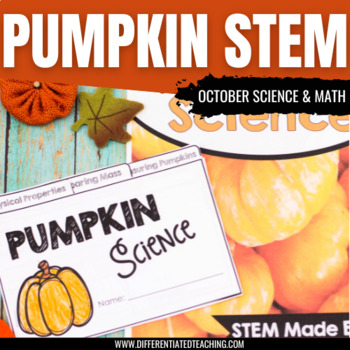Pumpkins Investigation: Halloween Science & Math Activities for October STEM
- PDF
What educators are saying
Description
Looking for a fun way to get your students some hands-on experience with matter and measurement? Pumpkin Science is a perfect way to blend these math and science concepts with some festive October STEM fun. Your students will love practicing their observation and measurement skills, and you'll love watching them get experience using tools like balance scales, measuring tapes, and rulers.
With directions for 5 complete pumpkin stations, each focused around a different inquiry question, your students can work in small group or as a whole class to dig deep into concepts like physical properties, comparing mass, and exploring volume and density.
A student mini-book allows them to record their notes for each station for a record of their learning, which can be a helpful tool for reflection and a great addition to an interactive science journal.
Skills addressed:
✔Physical properties of matter - color, size, shape, texture, etc.
✔Generating scientific diagrams w/ labels
✔Measuring & comparing mass using balance scales
✔Measuring length, height, and circumference
✔Making and testing a hypothesis
✔Drawing data-based conclusions
✔Introductory density via sink & float
✔Comparing & ordering numbers using place value
Product contents:
• Easy-to-follow directions for 5 Pumpkin Matter Stations
• Reproducible pumpkin science student mini-book
• Key math & science vocabulary for each station activity
*****************************************************************************
Check out these other October Resources:
Other science products:
• Science Vocabulary Word Work
*****************************************************************************
Product download information:
This product download is a digital file that will extract a folder that contains the purchased file(s). If you need help opening or printing a file, please refer to tech help within TpT by clicking here OR by clicking here for corrected printing
*****************************************************************************
Terms of Use:
© 2015 R. Davies. All rights reserved by author. These materials are intended for personal use by a single classroom only. Copying for more than one teacher, classroom, department, school, or school system is prohibited. For use in multiple classrooms, please purchase additional licenses. This product may not be distributed or displayed digitally for public view. Failure to comply is a copyright infringement and a violation of the Digital Millennium Copyright Act (DMCA). Clipart and elements found in this PDF are copyrighted and cannot be extracted and used outside of this file without permission or license. See product file for clip art and font credits.





